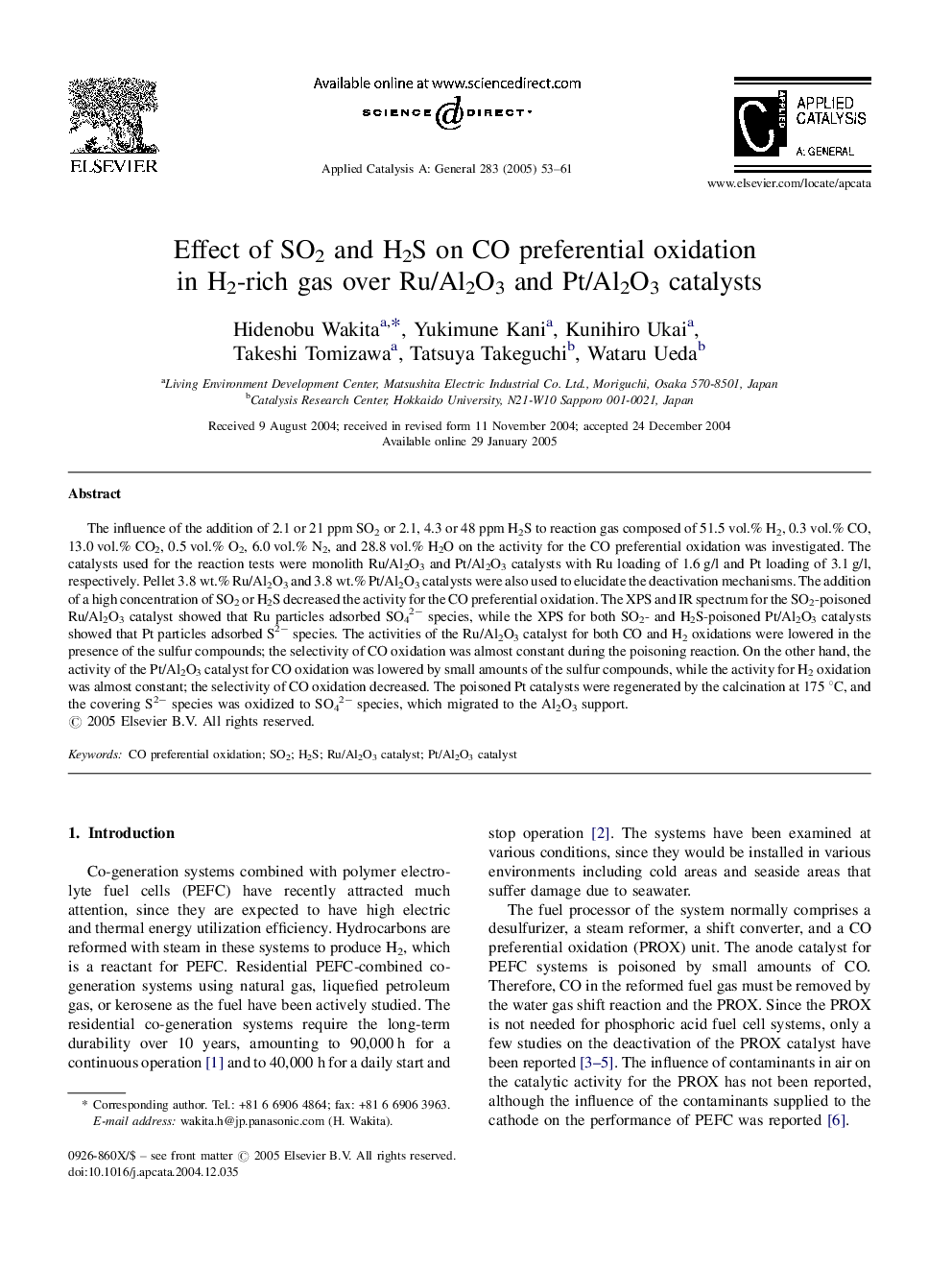| Article ID | Journal | Published Year | Pages | File Type |
|---|---|---|---|---|
| 9608005 | Applied Catalysis A: General | 2005 | 9 Pages |
Abstract
The influence of the addition of 2.1 or 21 ppm SO2 or 2.1, 4.3 or 48 ppm H2S to reaction gas composed of 51.5 vol.% H2, 0.3 vol.% CO, 13.0 vol.% CO2, 0.5 vol.% O2, 6.0 vol.% N2, and 28.8 vol.% H2O on the activity for the CO preferential oxidation was investigated. The catalysts used for the reaction tests were monolith Ru/Al2O3 and Pt/Al2O3 catalysts with Ru loading of 1.6 g/l and Pt loading of 3.1 g/l, respectively. Pellet 3.8 wt.% Ru/Al2O3 and 3.8 wt.% Pt/Al2O3 catalysts were also used to elucidate the deactivation mechanisms. The addition of a high concentration of SO2 or H2S decreased the activity for the CO preferential oxidation. The XPS and IR spectrum for the SO2-poisoned Ru/Al2O3 catalyst showed that Ru particles adsorbed SO42â species, while the XPS for both SO2- and H2S-poisoned Pt/Al2O3 catalysts showed that Pt particles adsorbed S2â species. The activities of the Ru/Al2O3 catalyst for both CO and H2 oxidations were lowered in the presence of the sulfur compounds; the selectivity of CO oxidation was almost constant during the poisoning reaction. On the other hand, the activity of the Pt/Al2O3 catalyst for CO oxidation was lowered by small amounts of the sulfur compounds, while the activity for H2 oxidation was almost constant; the selectivity of CO oxidation decreased. The poisoned Pt catalysts were regenerated by the calcination at 175 °C, and the covering S2â species was oxidized to SO42â species, which migrated to the Al2O3 support.
Related Topics
Physical Sciences and Engineering
Chemical Engineering
Catalysis
Authors
Hidenobu Wakita, Yukimune Kani, Kunihiro Ukai, Takeshi Tomizawa, Tatsuya Takeguchi, Wataru Ueda,
